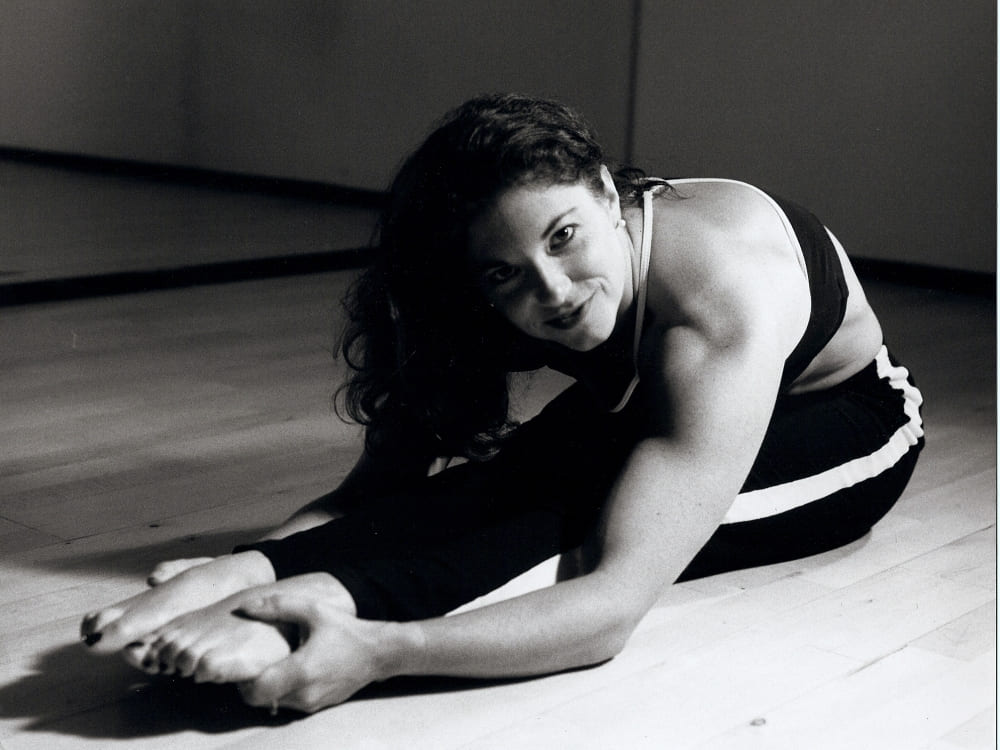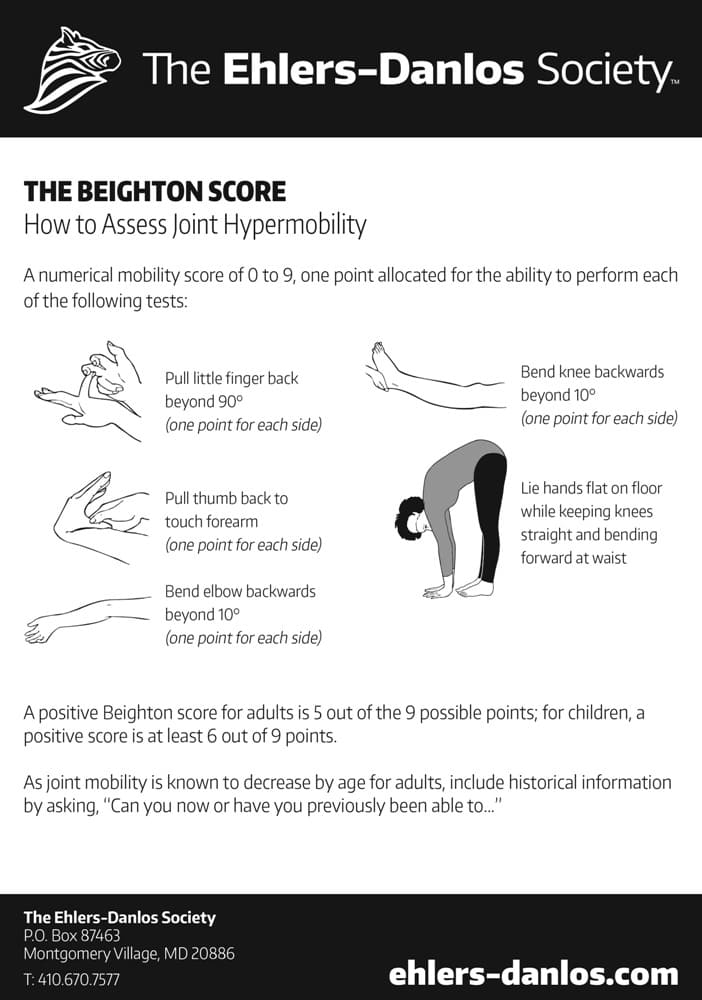
What is Hypermobility?
Did you amaze your friends when you were a child by performing tricks like putting your feet behind your head or popping your joints out? Did you ever refer to yourself as “double jointed?” If so, you may be hypermobile.
Simply put: Hypermobility is the ability to move joints beyond the normal range of motion. It’s a connective tissue disorder affecting the soft tissues of the body. This makes the joints (elbows, knees, ankles, toes, spine, etc.) loose or “lax” because the ligaments and tendons that connect those bones are softer than they should be.
Hypermobility falls on a spectrum which ranges from benign with no symptoms … to laxity in the joints … to more severe like Ehlers-Danlos Syndrome (EDS), Marfan’s Syndrome, & Osteogenesis Imperfecta.

It is:
- strongly inherited
- most common in childhood and adolescence (lessens with age)
- most common in females (3x more than men)
- more common in African, Asian, Afro-Caribbean, Arab
Hypermobility should not be confused with flexibility which refers more to stretchiness of the muscles. Flexible people are not necessarily hypermobile. It affects the JOINT not the MUSCLE! Therefore, a better term is Hyperlaxity!
Am I Hypermobile?
The current test for determining Hypermobility or Hyperlaxity is called the Beighton Score. It’s a simple test that measures your degree of hypermobility. Score 1 point for each joint for a total score of 9:

A Beighton Score of 5 or more is then paired with some other criteria (including joint pain in 4 or more joints lasting 3 or more months or a clearly affected first degree relative) to indicate if you fall on the Hypermobility Syndrome Spectrum.
Why Should I Care?
Many people with hyperlaxity have no problems at all. It can even be an advantage to dancers, gymnasts, and circus artists. For others it may result in musculoskeletal problems like:
- Joint Pain (e.g., tennis elbow, golfer’s elbow, sacroiliac-SI pain, chronic neck pain
- Sprains & Strains (eg., ankle and wrist)
- Tears (e.g., hip and shoulder labral tears)
- Subluxations
- Inflammation (e.g., knee chondromalacia, costochondritis of ribs & sternum, TMJ of the jaw)
- Stress Fractures
- Flat feet or fallen arches
- Sciatica or disc problems, and
- A predisposition to Arthritis.
Additional symptoms can occur in a hypermobile person because of it’s affects on the connective tissues of the body. Hyperlaxity may cause weakness in the:
- Digestive / Gastrointestinal System (IBS, Acid Reflux and GERD)
- Circulatory / Cardiovascular System (heart valve problems, fainting, low blood pressure and dizziness when standing, cold hands and feet, Reynaud’s Syndrome)
- Sympathetic / Autonomic Nervous System (fatigue; anxiety; sleep disorders; neuropathic pain — burning, tingling, shooting, numbness; resistance to anesthesia and pain killers; headaches and migraines)
- Visceral / Internal Organs (easily bruised, crepy skin; eye issues like myopia, astigmatism, detached retina; hernias; dry mouth or constant thirst)
- Uterus and Pelvic Floor (incontinence, pelvic organ prolapse, issues with pregnancy)
Many of these symptoms are hard to diagnose or misdiagnosed. There is currently no blood test or marker for hyperlaxity … and often these issues are treated separately and never related to each other.
What Should I Do?
Chances are if you are hypermobile, you’ve been dealing with loose joints most of your life — and maybe never noticed an issue. But for some, discovering that you fall on the hypermobility spectrum explains many unrelated symptoms you’ve had for years! There are some strategies for keeping joints stable and safe to minimize these issues. A movement specialist like a Pilates Teacher, Personal Trainer, Physical Therapist, etc. will be able to see and help you address joint hyperlaxity. (Of course more serious issues along the spectrum should be referred to a medical professional.) Pilates teachers are presented with hypermobile or “wonky” bodies quite often, and should pack their toolkit with methods for addressing this population!
For some tips on how to work with wonky bodies read, Hypermobility Part 2 and keep an eye out for Maria’s upcoming workshops for both teachers and clients!
Do I Want to Stretch?

Muscles move bone! They cross joints and are designed to move bones toward and away from each other. They are also designed to hold bones in place! In a hypermobile body, the connective tissue that holds the joint together (ligaments and tendons) are too loose or “lax.”
Lax joints can actually mean TIGHT muscles (especially hamstrings) because the body is trying to stabilize joints that move too much. But stretching for a hypermobile person doesn’t really work because they simply move the joint instead of the muscle.
Take a forward bend for example: Many people can only go so far because of their back and hamstring muscles. A hypermobile person will forward bend easily by simply flexing at the hip and “sitting” in the joint. They have to learn instead to fix the joint and move from the muscle belly.
Read more tips on what to do with wonky bodies in Hypermobility Part 2…